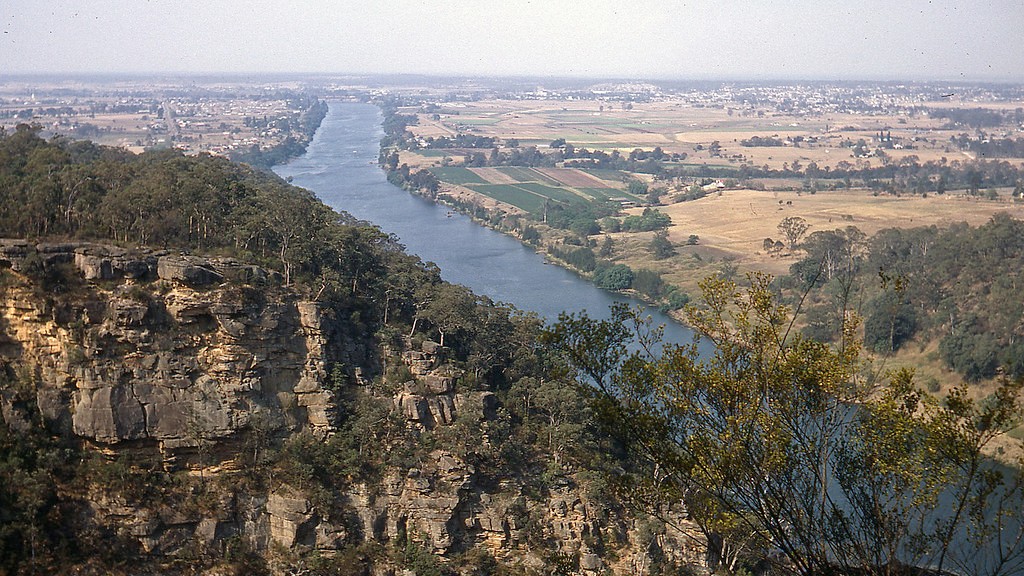As the effects of climate change become more pronounced, improving our understanding of how shifting global temperatures and patterns of precipitation will affect the world’s rivers and the people who depend on them will be increasingly important. One of the rivers most likely to be affected by global warming is the Mississippi River, located in the United States of America. With its large drainage basin, the Mississippi River is of critical importance to the country, providing a wide range of services including recreation, transportation and food production. However, it is also highly vulnerable to changes in the global climate, particularly with respect to rising sea levels.
coastal areas that border the Gulf of Mexico. The most recent projections indicate that sea levels along the Mississippi could rise an additional 9.2 – 12.2 inches by 2050, and as much as 24.6 – 61.5 inches by the end of the century.
These changes in sea level have the potential to have far-reaching effects for the Mississippi River. While the interactions between the river and the ocean are complex and difficult to predict, scientists have identified several key impacts. Firstly, higher sea levels will likely lead to a decrease in surface freshwater flow into the Mississippi River. As the gulf waters encroach further inland, saltwater will reach further upriver, and ultimately lead to increased salinization of the water.
Furthermore, rising sea levels could cause flooding of coastal lands and impede onshore navigation, potentially disrupting the movement of goods, services and people along the Mississippi River corridor. These changes could lead to displacement of communities, disruption to transportation and shipping, and impact the local economy.
In order to ensure the long-term prosperity of the Mississippi River, it is important for stakeholders to plan for the effects of climate change on local ecosystems and industry. Adaptation strategies such as hydrological restoration, water quality improvement, and increased public education and awareness could help mitigate some of the most severe impacts of rising sea levels, particularly in the most vulnerable coastal areas.
Local governments should also consider infrastructure modifications to reduce the risk of flooding, such as floodproofing buildings and protecting sensitive areas. This type of investment requires long-term thinking, but could pay off in helping to protect the people, businesses, and communities along the Mississippi River corridor.
Agriculture and Sea Level Rise
Agriculture is also likely to be affected. Not only would increased salinity from saltwater intrusion reduce the productivity of agricultural areas, rising sea levels could cause flooding in some agricultural regions near the Mississippi River. These changes in the floodplain and riverine systems could have a significant impact on the agricultural economy in the region.
Farmers and land managers may need to adjust their practices in order to accommodate sea level rise. This could include increasing intensity of crop rotations and shifting production to other regions, as well as investing in infrastructure such as drainage and irrigation systems or technologies that reduce water use.
Furthermore, higher sea levels could bring with them potential opportunities, such as ending the need to continue dredging the river, providing additional water-based recreational activities, or creating nurseries for aquatic species. If managed properly, these opportunities could be beneficial to both the local economy and ecology of the region.
Ecosystems Impact
The long-term effects of rising sea levels on the Mississippi River ecosystem remain to be seen. Scientists have identified several key impacts, including more frequent flooding, an increase in sediment deposits, and direct saltwater intrusion.
All of these changes will have implications for the species that live in and around the river. A decrease in freshwater levels and an increase in salinity may have disastrous consequences for the many fish species found in the Mississippi, such as the largemouth bass, carp, and striped bass. Meanwhile, certain birds that depend on the river for food and gathering sites, such as the American white pelican and bald eagle, could be impacted when their preferred habitats are transformed.
Conservation initiatives that focus on both maintaining the river’s natural processes and restoring habitats could be instrumental in helping to mitigate the impacts of sea level rise on local ecosystems. Furthermore, studies that monitor populations of birds and fish could provide a better understanding of the dynamics at play and inform future policy decisions.
Protecting Cities
The Mississippi River has long been an important artery of trade and transport, with cities such as New Orleans and Baton Rouge relying heavily on it for both commerce and culture. As sea levels continue to rise, these cities could be at risk of increased flooding, and could necessitate further investments in public infrastructure and flood protection.
The Federal Emergency Management Agency (FEMA) has taken a proactive approach in addressing the danger of flooding along the lower Mississippi River. By using a combination of mapping, modeling, and regional stakeholder coordination, FEMA’s Flood Risk Management Program aims to seek balance between societal and environmental needs in order to protect communities from disasters, while allowing for sustainable development. This type of strategic planning and public-private coordination could provide a model for other cities facing similar threats from the effects of sea level rise.
Research and Planning
As the effects of rising seas become more severe and the impacts more widespread, it is essential that governments, businesses, and local communities address the risks posed by sea level rise on the Mississippi River. Through education, planning, and research, we can ensure that the people, businesses, and ecosystems of the lower Mississippi River are resilient and adaptive in the face of climate change.
However, the choices we make now will have long-term effects that will shape the future of the region. Government bodies should prioritize research to better understand the impacts of sea level rise and to inform resiliency planning and investment. Land owners should practice conservation strategies, such as limiting water consumption and enhancing habitat connectivity. Businesses should reduce their environmental footprint and consider the effects of their actions on the local ecology. And, most of all, communities should rally together in order to create a positive vision for the future that maintains the Mississippi River’s natural resilience.
Economic Challenges of Sea Level Rise
As the effects of rising sea levels become more pronounced, the region’s economy could also experience serious impacts. According to the U.S. Small Business Administration, at least a quarter of the businesses within 22 miles of the Mississippi River are and small businesses are located within a 50-mile stretch of the river. Furthermore, the U.S. Army Corps of Engineers estimates that there are more than 400 port and transportation related businesses dependent on the river, such as boatyards and towing companies.
These industries are highly vulnerable to flooding and other effects of rising sea levels, and could experience reduced activity if the river’s shipping capabilities are impacted. Furthermore, coastal and ocean-dependent tourism, such as fishing and boating, and will suffer if the region’s ecology undergoes drastic changes due to rising seas.
The potential economic losses are substantial and could have long-term effects on businesses, including job losses. In order to guard against this, governments should consider investments in infrastructure and other adaptation measures to reduce risk and enhance resilience. Additionally, increased public-private partnerships and collaborations could facilitate the development of innovative solutions to address the economic challenges impacted by higher sea levels.
Policy Initiatives
In order to ensure the long-term sustainability of the Mississippi River, governments should help coordinate regional investments and initiatives to reduce the risk of flooding and improve resilience. For example, the U.S. Army Corps of Engineers has recently recommended a $6 billion integrated solution to address sea level rise, which would include flood protection projects, coastal defense levees and coastal wetlands management.
The Mississippi Delta is also a candidate for the National Oceanic and Atmospheric Administration’s Office for Coastal Management’s Adaptation Planning and Resilience Grants, which are designed to help communities prepare for sea level rise. Additionally, local governments could develop incentives to encourage investments in flood protection and other infrastructure improvements, as well as additional conservation efforts.
To ensure the long-term health of the Mississippi River and its constituents, private and public sector input and collaboration will be essential. With the right planning and investment, the river can remain an essential part of the region’s culture and economy.





